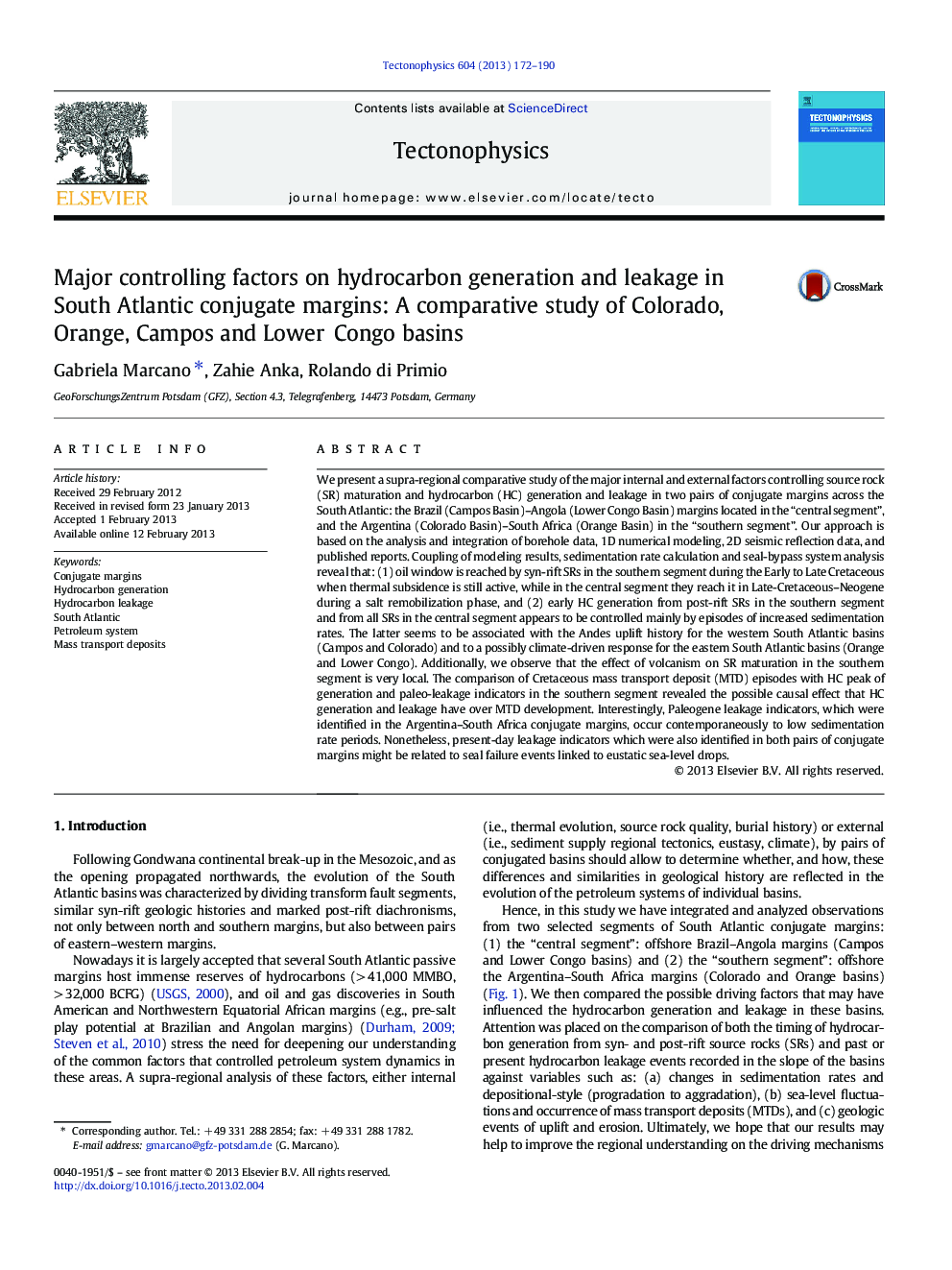| Article ID | Journal | Published Year | Pages | File Type |
|---|---|---|---|---|
| 4692159 | Tectonophysics | 2013 | 19 Pages |
We present a supra-regional comparative study of the major internal and external factors controlling source rock (SR) maturation and hydrocarbon (HC) generation and leakage in two pairs of conjugate margins across the South Atlantic: the Brazil (Campos Basin)–Angola (Lower Congo Basin) margins located in the “central segment”, and the Argentina (Colorado Basin)–South Africa (Orange Basin) in the “southern segment”. Our approach is based on the analysis and integration of borehole data, 1D numerical modeling, 2D seismic reflection data, and published reports. Coupling of modeling results, sedimentation rate calculation and seal-bypass system analysis reveal that: (1) oil window is reached by syn-rift SRs in the southern segment during the Early to Late Cretaceous when thermal subsidence is still active, while in the central segment they reach it in Late-Cretaceous–Neogene during a salt remobilization phase, and (2) early HC generation from post-rift SRs in the southern segment and from all SRs in the central segment appears to be controlled mainly by episodes of increased sedimentation rates. The latter seems to be associated with the Andes uplift history for the western South Atlantic basins (Campos and Colorado) and to a possibly climate-driven response for the eastern South Atlantic basins (Orange and Lower Congo). Additionally, we observe that the effect of volcanism on SR maturation in the southern segment is very local. The comparison of Cretaceous mass transport deposit (MTD) episodes with HC peak of generation and paleo-leakage indicators in the southern segment revealed the possible causal effect that HC generation and leakage have over MTD development. Interestingly, Paleogene leakage indicators, which were identified in the Argentina–South Africa conjugate margins, occur contemporaneously to low sedimentation rate periods. Nonetheless, present-day leakage indicators which were also identified in both pairs of conjugate margins might be related to seal failure events linked to eustatic sea-level drops.
► Episodes of increased sedimentation rates impacts hydrocarbon generation. ► Potential causes for seal failure includes climate and eustatism. ► Origin of mass transport deposits relates to hydrocarbon generation and leakage. ► Post-rift volcanic episodes locally impacts hydrocarbon generation. ► Post-rift salt remobilization episodes impacts hydrocarbon generation.
